D&D Monster Monday: Kobold
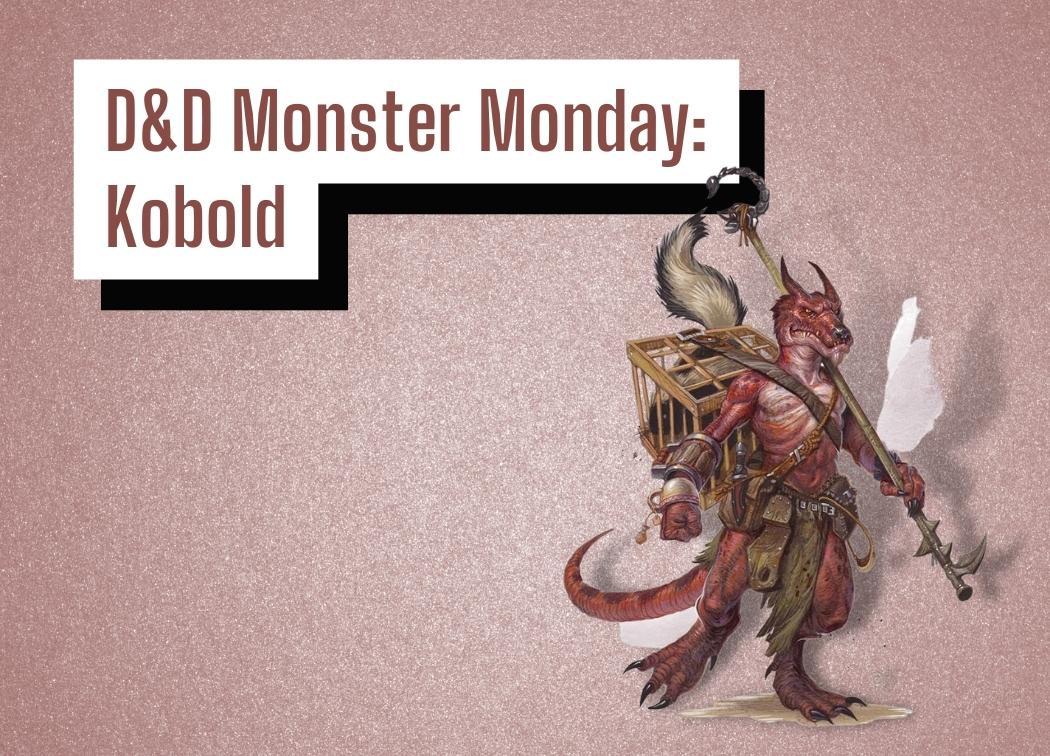
You carefully make your way down the dark tunnel – ever vigilant for a kobold ambush. As you traverse deeper and deeper with no sign of the cretins you begin to relax. That is until you foot is snapped-shut into a bear trap. You feel your bones crunch as dozens of stones are shot at you at lightning speed. You can hear the yipping now, they found you.
This week I wanted to dive into another “early game” creature, though these ones can be just as deadly to high-level players if you’re clever enough. Kobolds are an old favorite of mine. They are fanatical pack hunters similar to the gnolls and kuo-toa, but they are much more clever in their methods.
Kobolds are not strong creatures. They’re small and frail, but they are wickedly clever creatures. They construct traps and build structures to help defend their dark caves. As pack hunters they tend to stay in small groups as well, using these traps to get the jump on their enemy and rush in when their prey is weakened.
Kobold Lore
Much like a lot of the other early game minions in D&D, kobolds revere more powerful gods and creatures and dedicate their lives to serving them in some way. Specifically, kobolds worship dragons, a common ancestor but one that was graced with much more power than the average kobold.
Kobolds are smart in that they know that serving an all-powerful dragon is yet another thing that they can use to protect themselves and their lair. They also worship the lesser god, Kurtulmak, a servant of Tiamat, who has been trapped in a cave-in by the gnome god Garl Glittergold for an extremely long time. Unsurprisingly, kobolds hate gnomes.
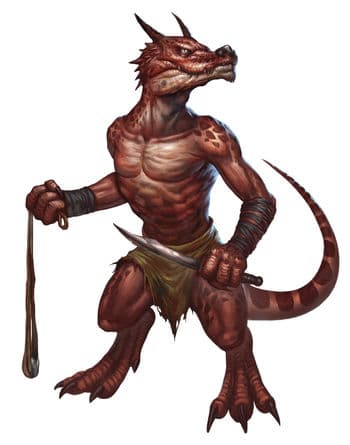
Kobolds are pack hunters. They are extremely weak on their own and are extremely easy pickings for predators that want an easy meal. However, in a small group, they become a force to be reckoned with, though many of their pack will still probably die during a hunt.
Where kobolds truly shine is when they are on the defensive. When kobolds have some time to set up traps, make tunnels, and corral creatures to use against their foes. Once their foe is weakened by their multiple traps a pack of kobolds will rush in and finish the job.
There are also different types of kobolds. There are those that are gifted with magic, esteemed inventors and trapmakers, and kobolds born with wings that can fly.
Kobold Stats and Abilities
You can find the kobold’s statblock on page 195 of the Monster Manual.
Basic Stats
- AC: 12
- HP: 5 (2d6 – 2)
- Speed: 30 ft.
- STR: 7 (-2)
- DEX: 15 (+2)
- CON: 9 (-1)
- INT: 8 (-1)
- WIS: 7 (-2)
- CHA: 8 (-1)
Kobolds have a pretty poor stat spread for even a CR 1/8 creature. Dexterity is their only ability score with a modifier above -1. All things considered, though a +2 modifier is pretty solid for a CR 1/8 creature.
For a small creature, 30 ft. of movement speed is pretty solid, but that’s really the only other compliment I can give to kobolds based on their stats.
5 hit points is pretty abysmal, even though they have an AC of 12. Even a level 1 PC could one-shot a kobold pretty easily. Survivability is basically non-existent for these creatures.
That being said, this shouldn’t come as a surprise to anyone based on their description and lore. Kobolds are pack hunters that expect massive casualties.
Resistances, Immunities, Saves, and Skills
- Senses: darkvision 60 ft., passive Perception 8
- Languages: Common, Draconic
- CR: 1/8 (25 XP)
There isn’t a lot to talk about here. Kobolds’ passive Perception is poor, but that’s to be expected since they have a -2 modifier for their Wisdom score.
They have darkvision of 60 ft. which is good, but they also have Sunlight Sensitivity. It’s a bit surprising that they’d only have the base 60 ft. of darkvision considering creatures and races with Sunlight Sensitivity tend to have improved darkvision.
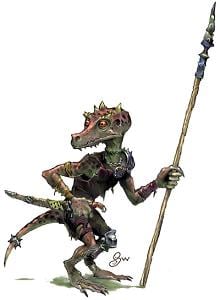
Abilities and Traits
Sunlight Sensitivity. While in sunlight, the kobold has disadvantage on attack rolls, as well as on Wisdom (Perception) checks that rely on sight.
Pack Tactics. The kobold has advantage on an attack roll against a creature if at least one of the kobold’s allies is within 5 feet of the creature and the ally isn’t incapacitated.
Like I mentioned before, it’s interesting that they’d have Sunlight Sensitivity without gaining any of the benefits that offset it. Realistically though it shouldn’t come into play very much.
You’d rarely encounter kobolds outside, during the day, and in the open anyways. Kobolds like to stick to their lairs, dark caves, or any other tight, dark space that they can set up lots of traps.
Pack Tactics is one of my favorite abilities and is basically a necessity for kobolds to be any sort of threat due to their poor ability scores. This trait gives kobolds advantage on attack rolls as long as they have an ally that’s engaged with their target.
Gaining advantage on attacks gives a kobold the ability to hit targets with ACs that would typically be outside of their threshold. It also makes them extremely deadly for low-level parties.
Actions
Dagger. Melee Weapon Attack: +4 to hit, reach 5 ft., one target. Hit: 4 (1d4 + 2) piercing damage.
Sling. Ranged Weapon Attack: +4 to hit, range 30/120 ft., one target. Hit: 4 (1d4 +2) bludgeoning damage.
This is a nice, balanced duo of weapon attack options. They have both a ranged and a melee option and both deal some respectable damage for a CR 1/8 creature. They can take down a level 1 PC within 2-3 hits pretty easily.
With Pack Tactics, they can also go for long ranged options with their slings, not at disadvantage. They just need an ally or two to sit in the front-lines while they pick away at their prey from afar.
Kobold Strengths
Traps, Traps, and More Traps!
Get crafty and get creative! Kobolds thrive when they have some time to set up a lot of traps that can weaken their enemies and force them to waste their resources.
Their stats don’t scream “expert builders and inventors” so their traps aren’t very intricate. Things like tripwires, swinging axe traps, and pitfall traps are easy enough for an experienced rogue to find, but there will be so many that they’ll be bound to miss a couple. Think quantity, not quality!
The Monster Manual also mentions using spring traps that shoot clay pots full of venomous centipedes or slimes. This is an excellent trap that can also be used as a way to give kobolds an easy trigger for Pack Tactics.
Falling rock traps are another notable trap that kobolds could construct. They’re great builders and are notably expert tunnelers so it would make sense that they’d be able to construct their tunnel in such a way that they could cause a cave-in.
They could then use their Sling action from 120 ft. away and have plenty of room to retreat once their prey has finished off the slime or other creatures that they threw at the party.
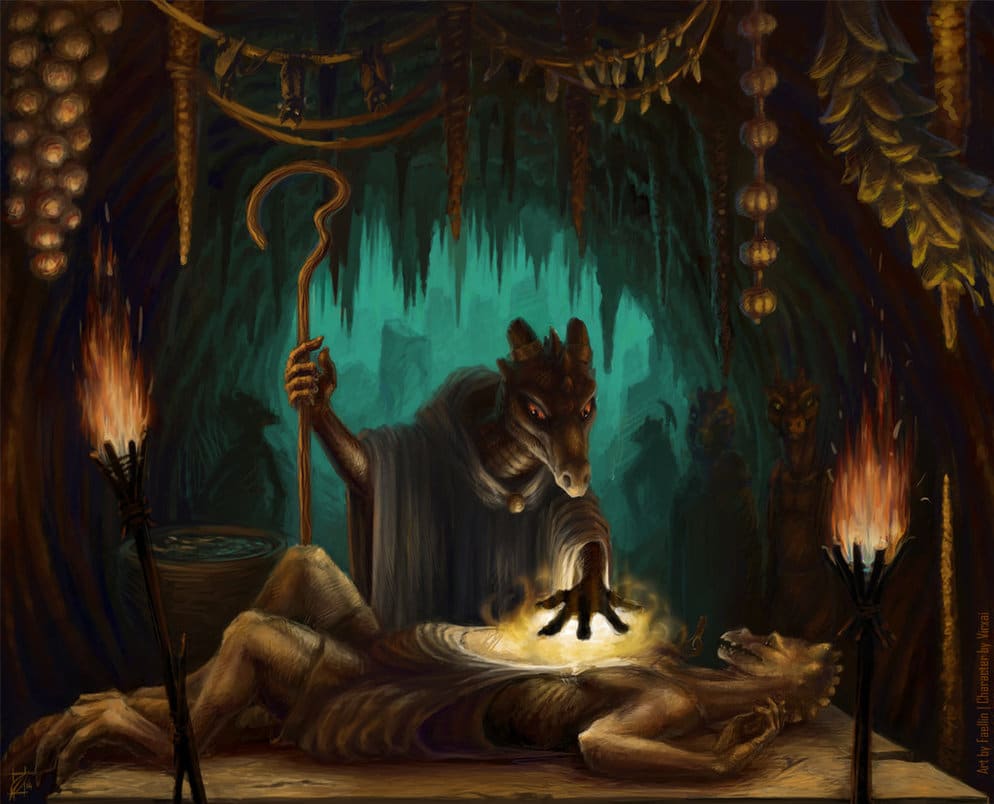
Strength in Numbers
Kobolds need Pack Tactics to be a threat to a party that’s higher than level 2. Their ability scores are low because it’s assumed that kobolds will be able to reliably gain Pack Tactics so you need to make sure that they’re regularly able to make use of this trait.
Having a large group of kobolds also enhances their overall survivability. Alone they are able to be disposed of by a single attack, even by a level 1 PC. Together though, they’re able to gang up on their prey and quickly bring them down.
Sure, their opposition will take out quite a few kobolds in the process, but ultimately they have a good shot at being successful. Kobolds are very much a hive mind. What’s good for the group as a whole is what they will do, even if individuals have to sacrifice themselves to do so.
Being only CR 1/8 means that you can stack the encounter with a lot more kobolds than you could with goblins. This gives kobolds a massive advantage in the action economy since they could very easily outnumber the party. More actions at advantage means more chances that the kobolds can whittle away at their prey.
Kobold Weaknesses
Abysmal Survivability
Kobolds are terribly weak in the survivability department. 12 AC is ok for a CR 1/8 creature all things considered, but when that’s coupled with a measly 5 HP you have a creature that can be taken down easily. Even by level 1 PCs!
Their survivability is directly tied to how many of their comrades they have alive still. The more targets there are in the encounter, the less likely that they will all be taken out. It’s a numbers game basically.
Susceptible to AoE
As you can imagine a creature with 5 HP that thrives in groups is a living target for any sort of AoE attacks. Couple this with their poor ability scores outside of Dexterity and you have a creature that is very likely to be out-right killed by AoE spells that don’t have Dexterity saving throws like Thunderwave.
Mid to high-level casters are going to be a hard-counter for kobolds. The more big AoE spells and abilities that the party has access to the less likely the kobolds are going to be successful at confronting them at all.
This goes double for long-ranged AoE. Anything that can hit kobolds from a distance while they hide from the party is going to immediately destroy whatever ambush or chokepoint that the kobolds set up.
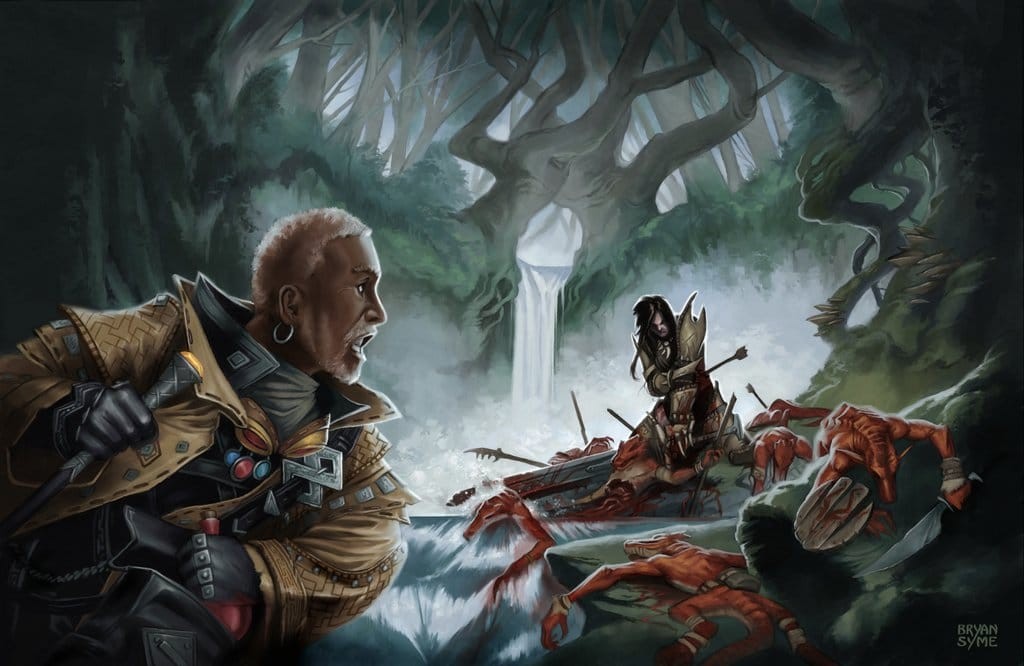
How to Play a Kobold
Ambush!
Disperse your kobolds into small groups behind important chokepoints. Ideally, they’ll sit behind a few traps or lure a larger monster towards the party and then simply pepper them with rocks from their slings.
With a +2 modifier to Dexterity, they have a decent chance at being able to hide while they wait and potentially gain advantage on their initial attack at the party or even gain a surprise round.
Kobolds are anything but hardy creatures and they can be taken out quickly by a few well-placed AoE spells. They do not want to be hitting their adversaries on an even-field of combat.
If the party stops to rest you could always throw a small patrol of kobolds at them to interrupt their rest. Another option would be to set up some more traps while the party takes an hour or so to rest and recuperate. Keep setting up ambushes and things to continue to annoy the party.
Hit Them in Waves
Continually ambush and flank the party and don’t let them rest. You want the party to be exhausted, spent for resources, and low on health before you even think about hitting them head-on with your kobold forces.
That being said, don’t be afraid to hit them from afar or throw a small group of kobolds at them. If the traps aren’t working you’re going to need to do something to start whittling the party down.
Kobolds are clever and they will give up their lives to give the rest of their colony a better shot at eliminating the threat. They will gladly set-up ambushes and chokepoints throughout the tunnels of their lair to pepper the party. They’ll try to retreat when they can, but they’re willing to die if it means they give their pack a solid advantage.
Conclusions
Kobolds are great low CR creatures and because of their nature of trapmaking and ambushing they can even be a sizeable threat for mid-level characters. Like any low CR creature, they have their glaring weaknesses, but they overcome them through Pack Tactics and their deadly traps.
They require a unique playstyle. They’re not like other creatures that you can simply throw into a room and combat the party in a head-to-head combat situation. Kobolds thrive in long, curving hallways riddled with traps and chokepoints that will chip away at the party’s health and resources.
Kobolds are also the willing servants of dragons. Don’t be surprised to see them as a staple in a dragon’s lair either. They could set up a simple defense for their dragon overlord and even help out a bit in the case of a skirmish between the dragon and a party of would-b
